
15311826613
Click to add WeChatTank leaching represents a crucial process in the gold extraction workflow.Tank leaching is particularly well - suited for the processing of medium - sized secondary gold mines. When dealing with ores that exhibit relatively uniform properties, tank leaching can effectively showcase its stable leaching capabilities. During the leaching operation, the production scale can be flexibly adjusted. This is achieved by either increasing or decreasing the number of leaching tanks in accordance with the scale of the ore supply and specific production requirements. Now, let's delve into the detailed process of secondary gold tank leaching.
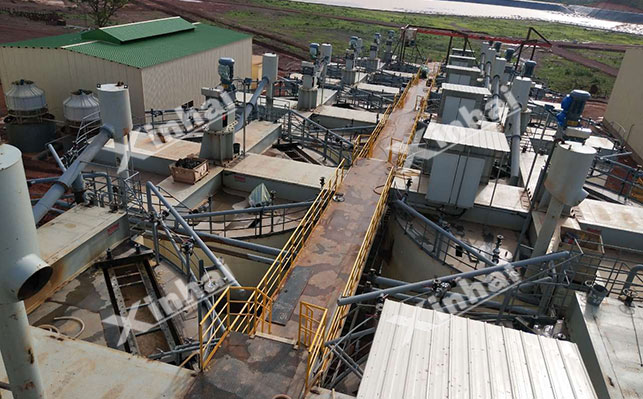
Crushing and screening: This link mainly feeds the mined ore into the crushing stage for simple dissociation. According to the ore particle size requirements, there are coarse crushing, medium crushing and fine crushing. In the process, jaw crushers are usually used for coarse crushing (particle size range is about 50-100mm); cone crushers are used for medium and fine crushing, and the particle size range is between 5-25mm. The crushed ore is screened by a vibrating screen to ensure uniform particle size. Unqualified coarse ore is returned to the crusher for re-crushing, and qualified particle size is directly put into the grinding operation.
Grinding: The crushed mineral is fed into the ball mill by the feeder for grinding. Its main purpose is to make the mineral reach the monomer dissociation state. Generally, the ore is ground to 70%-90%-200. During the grinding process, the grinding effect is ensured by controlling the feeding speed of the mill, the addition amount and ratio of the grinding medium, the speed of the ball mill and other parameters.
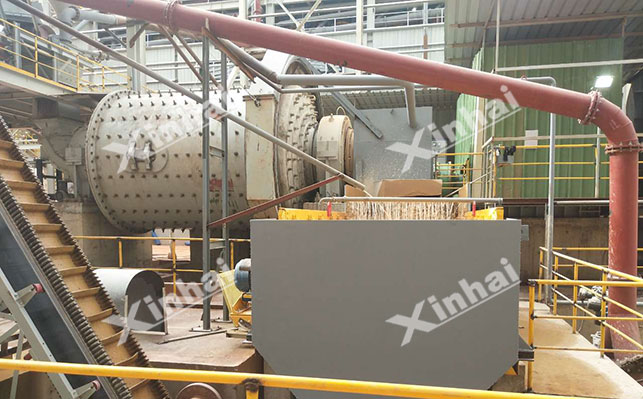
Preparation of leaching tank: The leaching tank is usually made of corrosion-resistant steel, such as stainless steel, and a stirring device and an aeration system are installed inside the tank. Before leaching, check the sealing of the leaching tank, the operation of the stirring device, and the ventilation of the aeration system. Add an appropriate amount of water and an adjusting agent to the leaching tank. The commonly used adjusting agent is lime. Adjust the pH value of the slurry to 10-11 to create an alkaline environment, inhibit the hydrolysis of cyanide, and increase the leaching rate of gold.
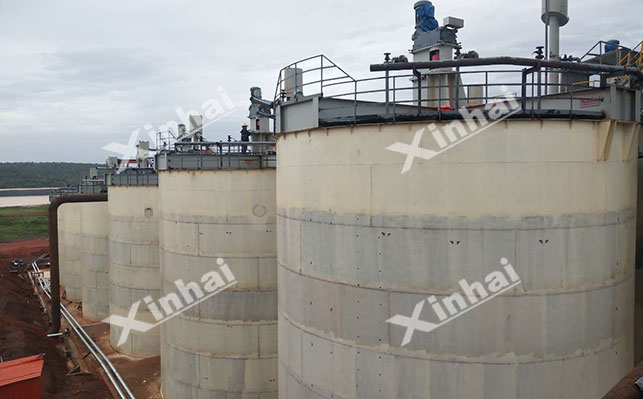
Addition and mixing of cyanide: After the ground slurry is pumped into the leaching tank, add an appropriate amount of cyanide, such as sodium cyanide (NaCN). The amount of cyanide added is determined according to factors such as the nature of the ore and the gold grade, and is generally 0.5-5kg per ton of ore. Turn on the stirring device to fully mix the slurry with the cyanide solution. The stirring speed is controlled at 150-300r/min to ensure that the gold minerals in the slurry can fully contact with the cyanide. At the same time, air or oxygen is introduced into the tank through the aeration system, and the aeration volume is generally controlled at 0.5-2m³/(m²·min) to provide the necessary oxidation conditions for the dissolution of gold.
Leaching time control: The leaching process lasts for a certain period of time, generally 24-72 hours, and the specific time depends on the nature of the ore and the difficulty of gold leaching. During the leaching process, the cyanide concentration, pH value, dissolved oxygen content and gold leaching rate in the slurry are regularly tested. According to the test results, cyanide and regulators are added in time to ensure that the leaching reaction is carried out under reasonable conditions.
Filtration: After leaching, a concentrator, vacuum filter or filter press is used to separate the slurry from solid and liquid. The vacuum filter generates negative pressure through a vacuum pump, so that the liquid in the slurry is discharged through the filter cloth, and the solid particles are left on the filter cloth to form a filter cake. The filter press squeezes the liquid in the slurry through pressure to achieve solid-liquid separation. During the filtration process, in order to improve the filtration efficiency and the clarity of the filtrate, an appropriate amount of flocculant, such as polyacrylamide (PAM), can be added to flocculate the fine solid particles into larger particles for easy filtration. The filter cake after filtration is mainly tailings, which contains impurities such as unreacted gangue minerals and needs to be properly treated.
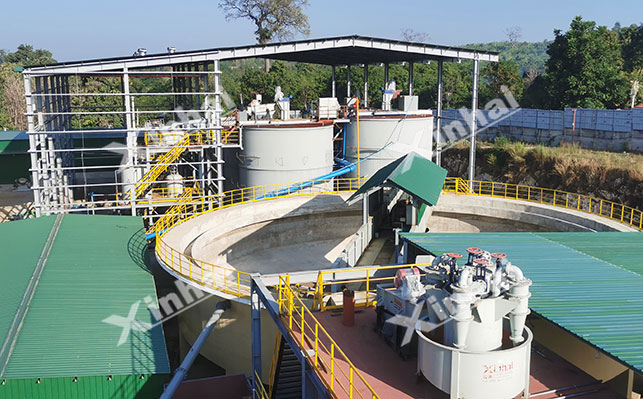
Washing: Wash the filter cake to recover the gold cyanide complex and cyanide remaining in the filter cake. Usually, the filter cake is washed multiple times with clean water or a low-concentration cyanide solution by countercurrent washing. The washing liquid after washing is combined with the filtrate and enters the subsequent gold recovery process. By washing, the gold content in the tailings can be effectively reduced, the gold recovery rate can be increased, and the emission of cyanide can be reduced.
Activated carbon adsorption: The filtered gold-containing solution is pumped into the adsorption tank and a certain amount of activated carbon is added. Activated carbon has a developed pore structure and a huge specific surface area, and has a strong adsorption capacity for gold cyanide complexes. During the adsorption process, the activated carbon is fully contacted with the solution by stirring, and the adsorption time is generally 8-24 hours. After the adsorption is completed, the gold-loaded carbon is separated from the solution by screening or filtering. The gold-loaded carbon contains a large amount of gold, which can be subsequently desorbed.
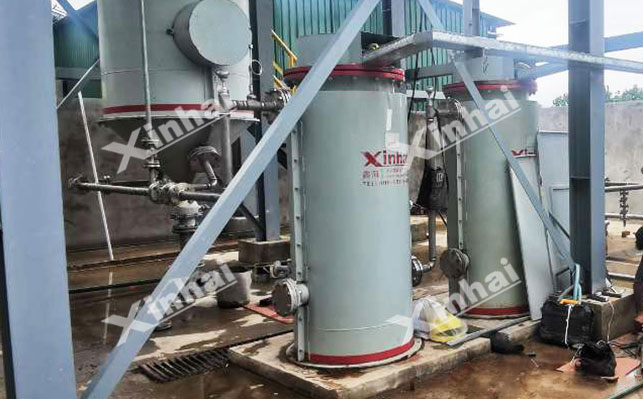
Zinc powder replacement: In addition to the activated carbon adsorption method, gold recovery can also be used. Add an appropriate amount of zinc powder to the gold-containing solution. Zinc is more active than gold and can replace gold from the gold-cyanide complex solution. During the replacement process, the desorption electrolysis pH value of the solution is controlled at 10-11, the temperature is 20-30°C, and an appropriate amount of lead salt is added as a catalyst to increase the speed of the replacement reaction and the recovery rate of gold. After the replacement reaction is completed, the replaced gold powder is separated from the solution by filtering and other methods.
Desorption and electrolysis of gold-loaded carbon:For the case of gold recovery by activated carbon adsorption, the gold-loaded carbon is sent to the desorption device for desorption. Common desorption methods include high temperature and high pressure desorption and chemical agent desorption. High temperature and high pressure desorption is to desorb the gold cyanide complex from the activated carbon under high temperature (150-200℃) and high pressure (0.5-1.5MPa) conditions using a desorption solution (such as a mixed solution of sodium hydroxide and sodium cyanide). Chemical agent desorption uses specific chemical agents, such as thiourea, to desorb at room temperature and pressure. The desorbed gold-containing solution is electrolyzed so that the gold ions are reduced to gold elements by electrons at the cathode to form gold mud.
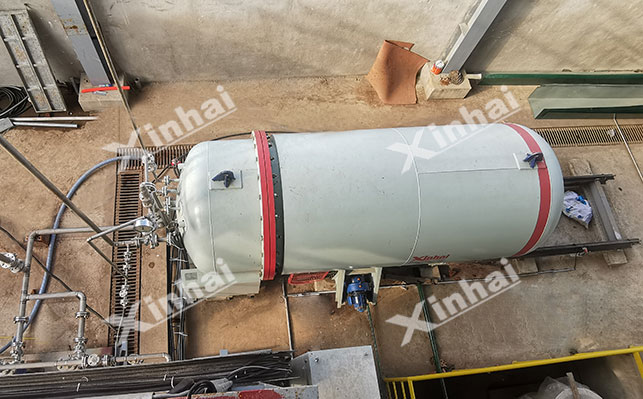
Gold powder smelting: For the gold powder obtained by zinc powder replacement method and the gold mud obtained from the desorption electrolysis of gold-loaded carbon, both need to be smelted and purified. After mixing the gold powder or gold mud with an appropriate amount of flux, put it into a furnace for smelting. The smelting temperature is generally controlled at 1200℃ for desorption electrolysis-1300℃ for desorption electrolysis, so that the gold is fully melted and separated from impurities. The smelted gold liquid is poured into a mold for cooling and molding to obtain a high-purity gold ingot.
Wastewater treatment: The cyanide-containing wastewater generated in the entire tank leaching secondary gold cyanidation process must be strictly treated. First, the chemical precipitation method is used to add ferrous sulfate and other reagents to the wastewater to react cyanide with ferrous ions to form ferrocyanide complex precipitation, thereby reducing the concentration of cyanide in the wastewater. Then, the residual cyanide and heavy metal ions in the wastewater are further removed by ion exchange and biological treatment methods, so that the wastewater meets the national emission standards before being discharged. The treated wastewater is monitored in real time to ensure that the discharged water quality meets the standards.
After solid-liquid separation, if there is no suitable comprehensive utilization method for the time being, the tailings need to be safely stored. In the site selection and construction process of the tailings pond, the terrain and geological conditions must be fully considered to ensure the stability and safety of the tailings pond. An impermeable layer is laid at the bottom of the tailings pond to prevent harmful substances in the tailings from leaking and polluting the soil and groundwater. At the same time, flood diversion ditches and flood discharge facilities are set up around the tailings pond to avoid rainwater erosion and tailings loss.
When choosing the tank leaching method for gold extraction, many factors need to be considered, the main one being the properties of the ore, including the distribution particle size of the gold minerals, the hardness of the ore, etc. At the same time, the production cost should be considered. The equipment investment for the tank leaching method is relatively large, but the operating cost is relatively stable. It is necessary to comprehensively evaluate the cost differences with other gold extraction methods in terms of equipment purchase, reagent consumption, energy consumption, etc. In addition, attention should be paid to environmental protection requirements. Cyanide-containing wastewater and tailings generated by the tank leaching method need to be properly handled to ensure compliance with environmental protection standards.